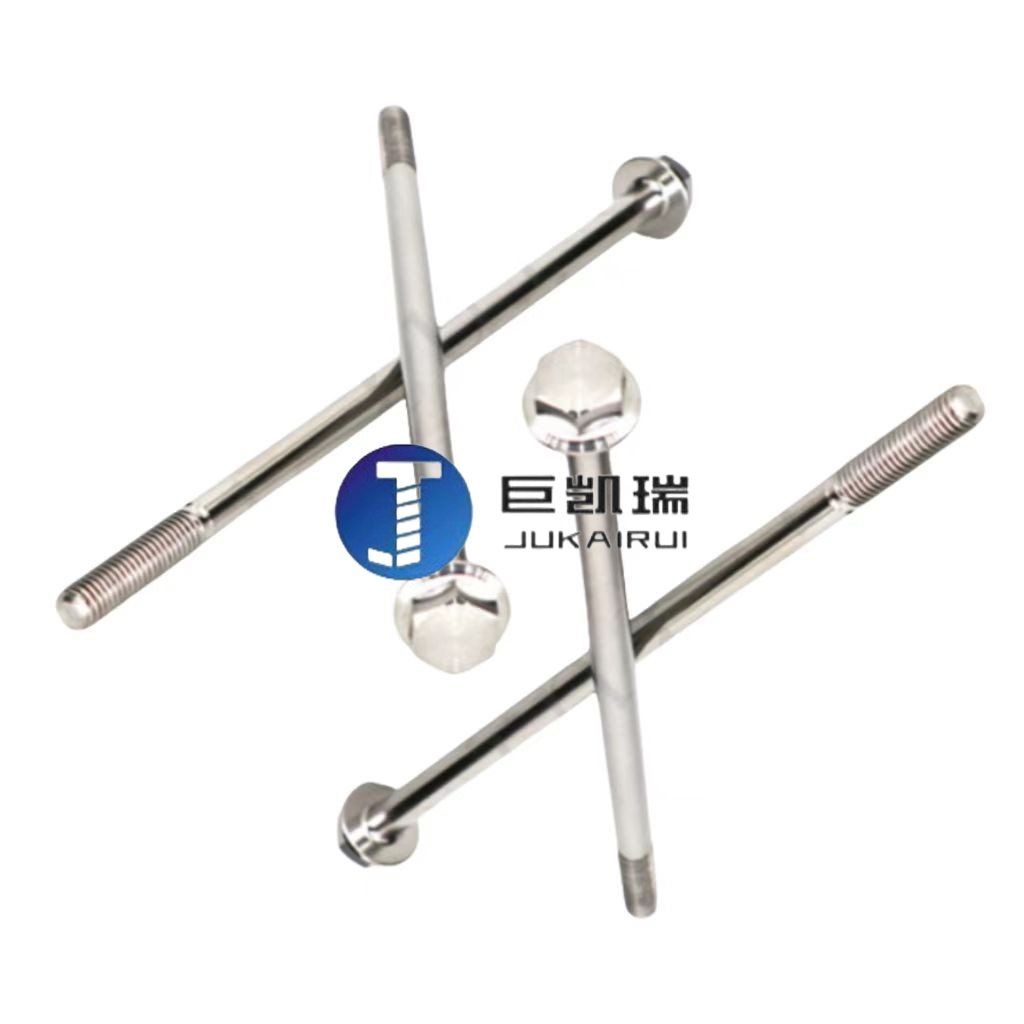Release time:2020-01-16 18:44 Browse:

When discussing the seismic performance of extension screws, we first need to understand their design intention, material characteristics, manufacturing process and performance in practical applications. As a special fastener, the length of the extension screw is far longer than the traditional screw, which not only gives it the ability to connect across a larger distance, but also shows a unique advantage in seismic performance.
First, the design intention and advantages of lengthening screws
The original intention of the extension screw is to solve the limitations of the traditional short screw in the connection distance limited, insufficient bearing capacity and other problems. By increasing the length of the screw, it can achieve a stable connection over a longer distance, which is particularly important for large structures, Bridges, high-rise buildings and other engineering fields that require high strength connections. In terms of seismic performance, the advantages of lengthening screws are mainly reflected in the following aspects:
1. ** Higher carrying capacity ** : Due to the increase in length, the lengthening screws can be dispersed and withstand greater loads, which can effectively reduce the structural damage caused by the failure of connectors in the event of natural disasters such as earthquakes.
2. ** Stronger toughness ** : high-quality extension screws are usually made of high-strength alloy steel or stainless steel and other materials, these materials not only have excellent mechanical properties, but also have good toughness, can maintain connection stability under the impact of seismic waves, not easy to break.
3. ** Better stress distribution ** : The design of the lengthening screw makes the stress more evenly distributed in the connection part, reducing the phenomenon of stress concentration, thus improving the seismic performance of the overall structure.
2, material selection and manufacturing process
The choice of materials and manufacturing process have a crucial impact on the seismic performance of lengthening screws. Stainless steel, alloy steel and other high-strength, corrosion-resistant materials are the first choice for manufacturing lengthening screws. These materials not only have excellent mechanical properties, but also maintain stable performance in harsh environments, ensuring the durability and safety of the connection.
In terms of manufacturing process, precision processing technology and strict quality control are the key to ensure the quality of lengthening screws. From the screening of raw materials, forging, heat treatment to precision machining, surface treatment and other aspects, all need to be strictly controlled to ensure that the dimensional accuracy, surface quality and internal organization of the product meet the design requirements.
3, the actual performance of seismic performance
In practical applications, the seismic performance of lengthening screws has been widely verified. In earthquake-prone areas, many important infrastructure and buildings use extension screws to connect key parts. These structures show good stability and seismic performance in the earthquake, and effectively reduce the loss caused by the failure of the connector.
For example, in bridge engineering, lengthening screws are widely used in the connection of main beams with piers, abutments and other parts. These joints are the key nodes in bridge structure, and their seismic performance directly affects the safety and stability of the whole bridge. By using lengthening screws for connection, the bearing capacity and seismic performance of these joints can be significantly improved to ensure the safety of the bridge in earthquakes.
4. Challenges and solutions
Although the extension screw performs well in seismic performance, it also faces some challenges in practical application. For example, in extreme environments, such as high temperature, low temperature, humidity or corrosion, the performance of extension screws may be affected. To address these challenges, the following measures can be taken:
1. ** Optimize material selection ** : Select the right material according to the specific use environment, such as using materials with better high temperature resistance, low temperature resistance or corrosion resistance.
2. ** Improve the manufacturing process ** : By improving the manufacturing process, improve the accuracy and surface quality of the product, reduce the occurrence of stress concentration and corrosion.
3. ** Strengthen maintenance inspection ** : Regularly check and maintain the extension screws in use, timely discover and deal with potential problems to ensure the stability and safety of the connection.
5. Conclusion
In summary, the extension screw has shown a unique advantage in seismic performance. Through reasonable design, high-quality material selection and strict manufacturing process control, it can ensure that the extension screws maintain stable connection performance in natural disasters such as earthquakes, and provide a strong guarantee for the safety and stability of engineering structures. In the future, with the continuous development of material science and manufacturing processes, we have reason to believe that the seismic performance of lengthening screws will be further improved, providing a more reliable choice for more applications.
# Lengthening screws # Lengthening bolts # Lengthening outer hex screws # Lengthening inner hex screws # fasteners

